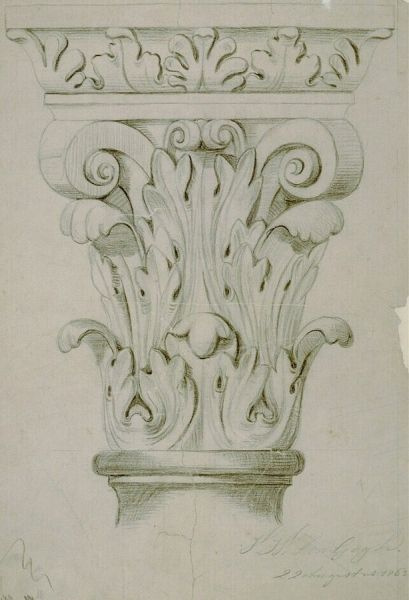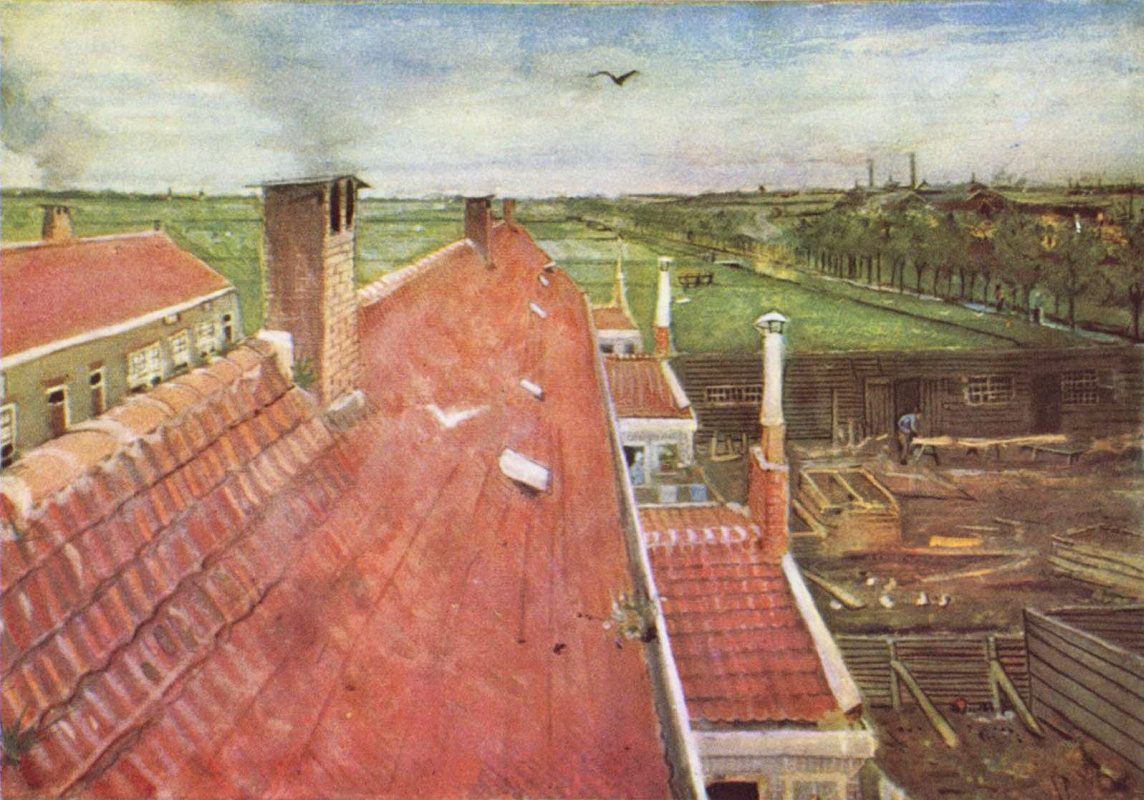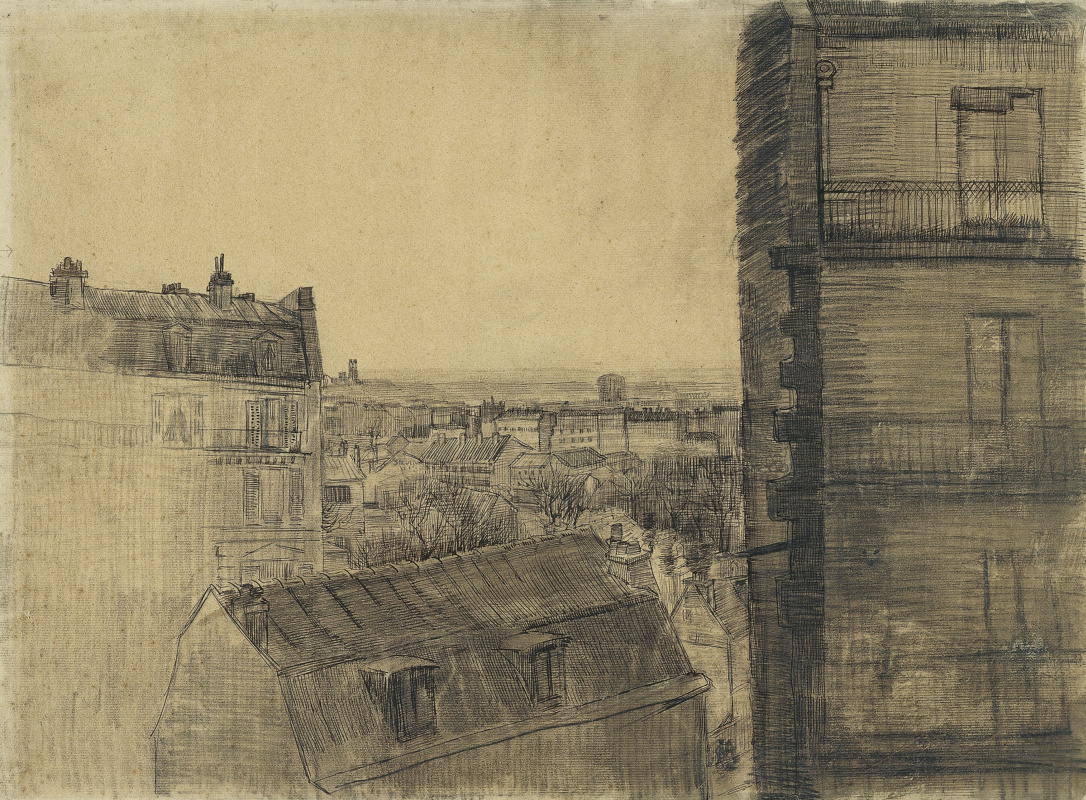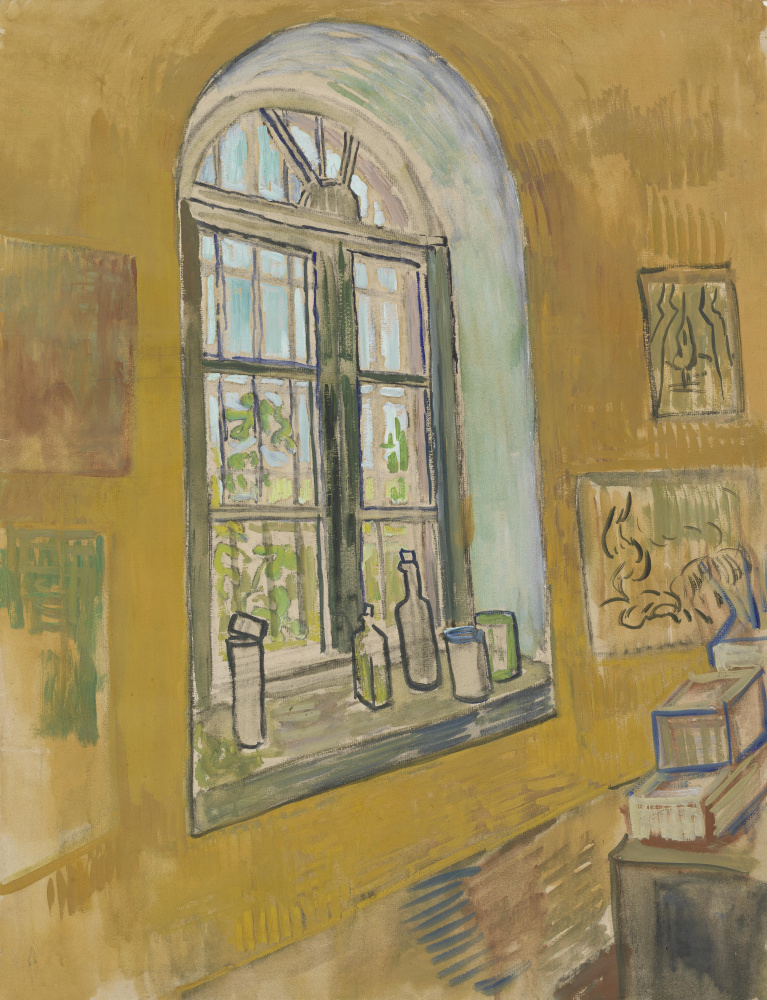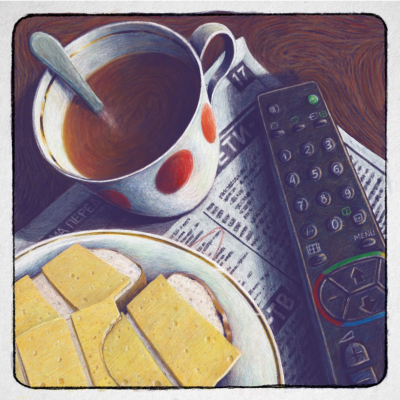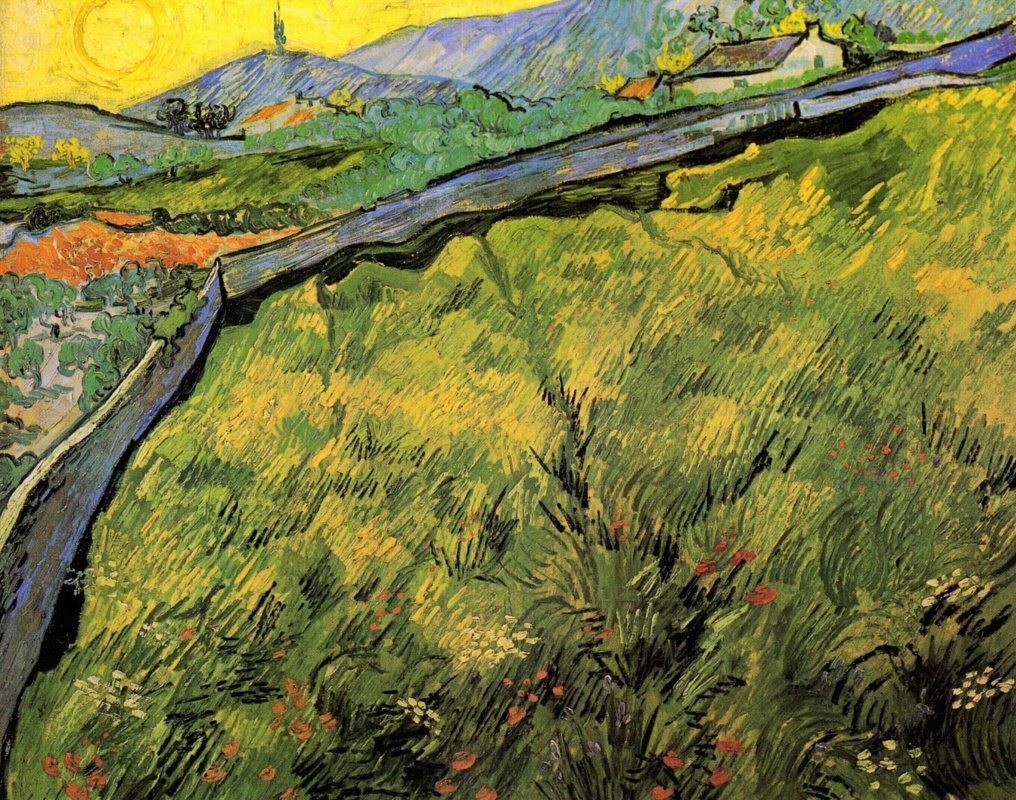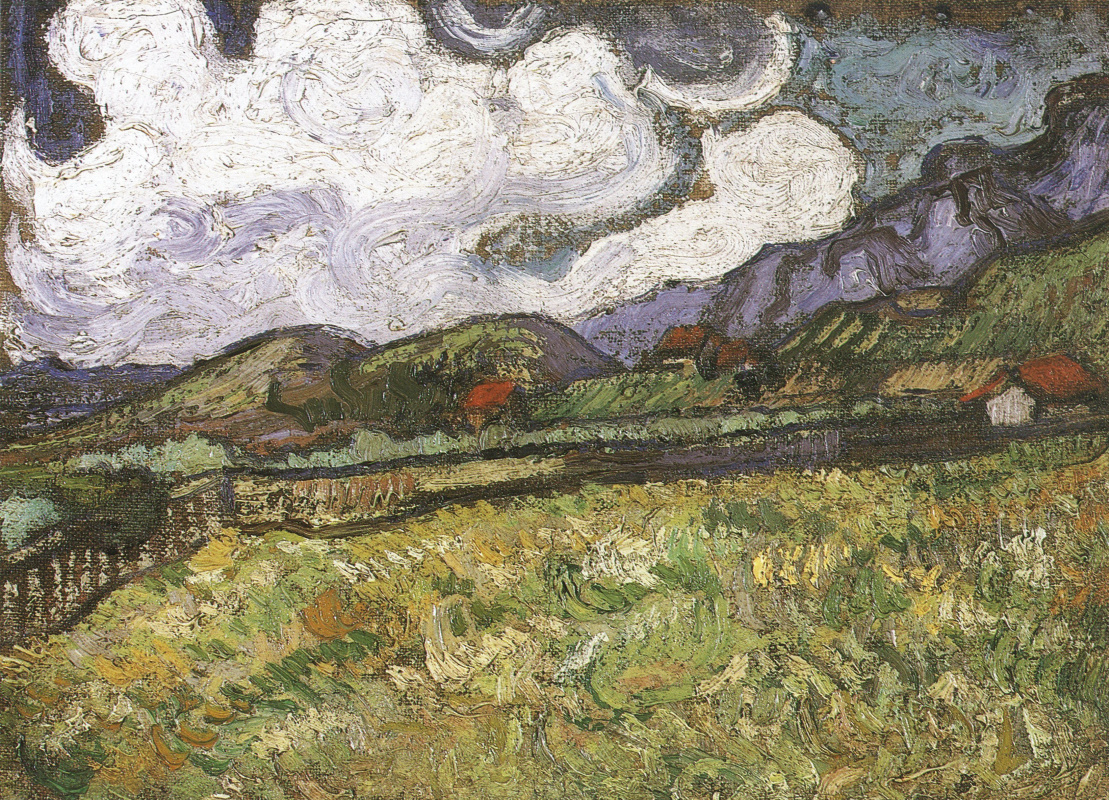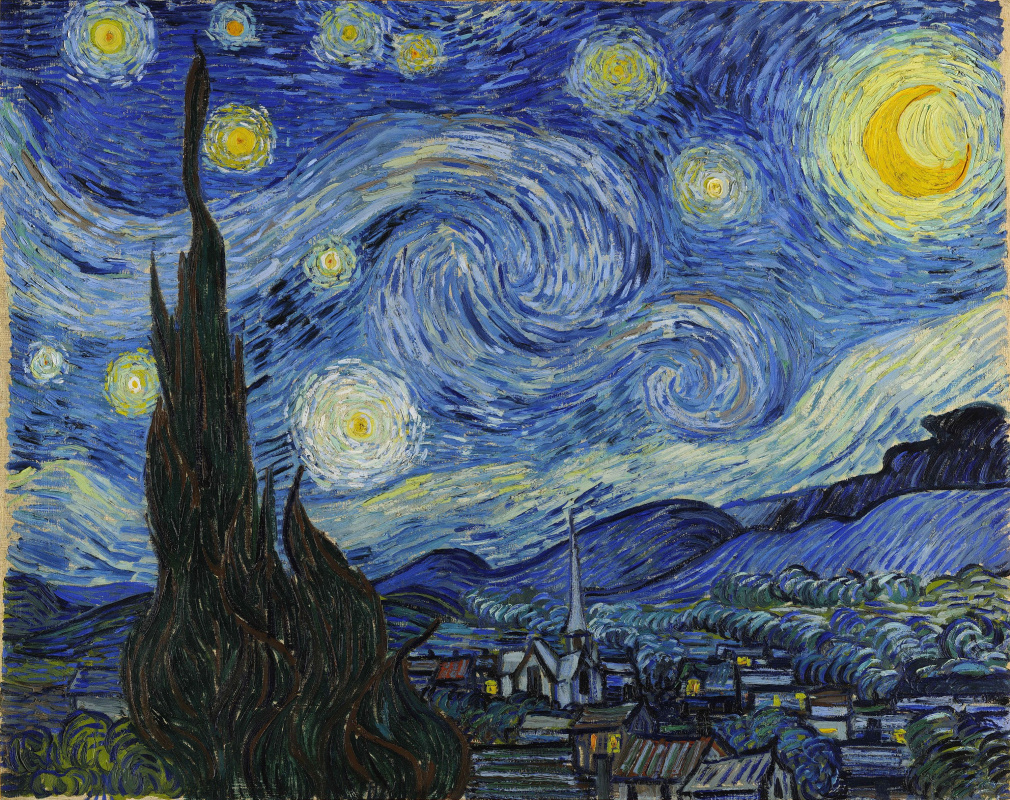By no stretch of imagination can we describe van Gogh’s life as a bed of roses. However, to make for that, the artist was free to travel. During his life, van Gogh resided in a lot of places and changed a dozen addresses. Perhaps, any artist, now and then, paints what they see out of the window — and he did, too. Wherever he found himself — in his parents' house, in a tiny studio in the Hague, even in a mental hospital, — and whatever the landscape
, van Gogh never failed to take inspiration from it.
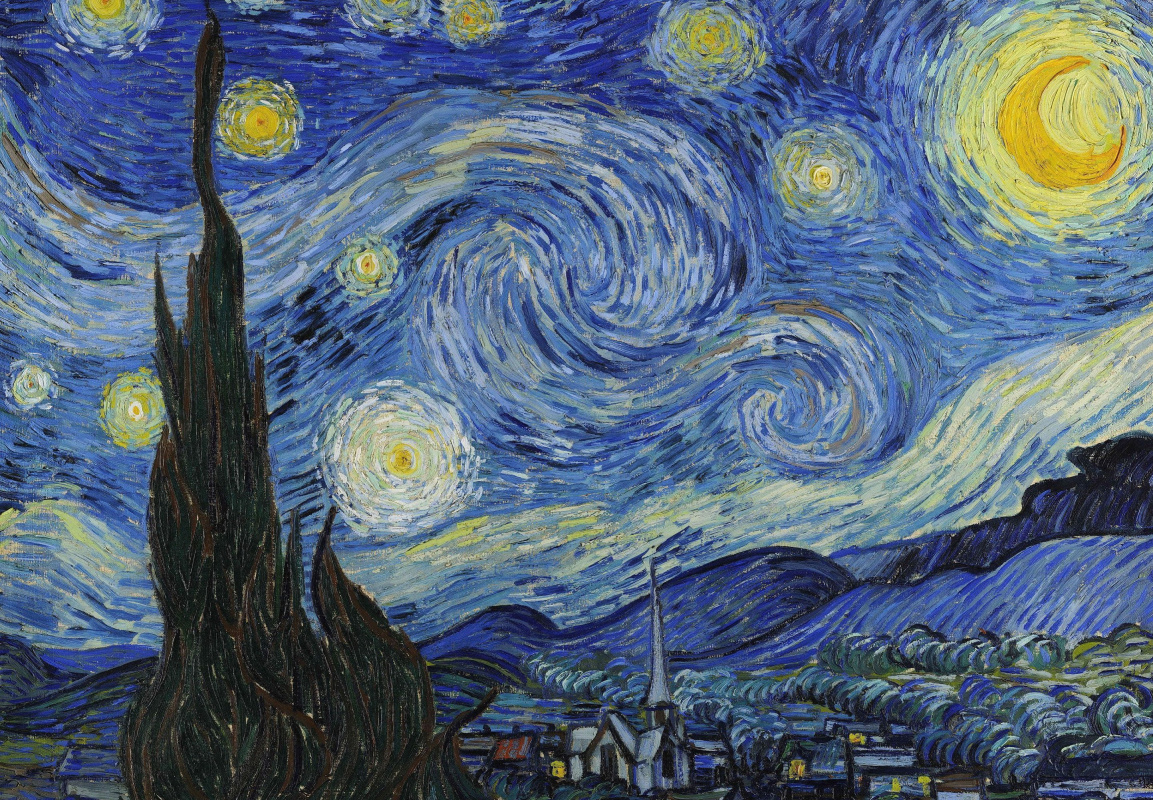
The Corinthian order
1863
Groot-Zundert
The sketch of a pilaster is one of Vincent’s earliest works that have survived. It was drawn in 1863, when the future painter was supposed to follow an art dealer’s career — nobody at that time had an idea of how famous van Gogh’s name would become some decades later. For a long time, it remained a mystery what object Vincent used as the model for the sketch . But while making the biography documentary Vincent: The Full Story, the art critic and filmmaker Waldemar Januszczak spotted the very same pilaster on the town hall of Groot-Zundert in the Netherlands (see the photo above). It is van Gogh’s birthplace, there he spent his green years long before the impressionism story started. The house of Vincent’s father, the pastor, is just opposite the town hall, so the future artist could see the pilasters out of his window every day.
The roof, the view from the Studio of van Gogh
21.07.1882, 39×55 cm
The Hague
In December 1881, the artist once again ran away from his parents' home and came to The Hague. His dwelling place cannot have been too spacious and comfortable. But there, Vincent, at last, had a family he had been dreaming of so much — Sien and her two children. Of course, they were always short of money, and the domestic happiness soon appeared transient. But it was there, in his own studio, he would begin painting as much as he liked and in the manner he liked. So far, though, he was just groping his way to painting in oils, carefully honing his individual art style. In The Hague, he painted two watercolours of the view out of his studio’s window. The third one is dated 1883: Vincent might have completed it after leaving the place, or done the winter landscape from memory. The artworks allow inferring that the studio that was van Gogh’s flat located in the outskirts: farther, there were only fields and the perspective of a country road.Paris
The Paris period in van Gogh’s biography was marked with a breakthrough in his development as an artist. There, he, firstly, took to painting mostly in oils. And secondly, after getting to know Japanese prints and discovering the Impressionists and Impressionism , he started shaping, little by little, his art and artistic individuality. In Paris, he and his brother Theo, shared an apartment in rue Lepic. Most works of that period are painted en plein air, but there are some showing the view from the window at Vincent’s home. The first of the pictures seems to have been painted early in the morning. With fine, aerial strokes, the painter conveys the serenity of the air and the thin haze wrapping the houses not awakened yet. Another Impressionism picture leaves a sensation of something ‘weightier,' more palpable. In it, the houses have a look as if they are formed of small balls of modelling clay.
The view from the apartment on Rue Lepic
1887, 39.5×53.9 cm
In van Gogh’s complete works list there is one more picture of the view out of the window in Paris. It is a pencil and ink sketch
. Van Gogh here seems to be going back in time, feeling nostalgic for the gallery of the past days and the places he once left.
The window of the asylum
October 1889, 62×47.6 cm
Saint-Rémy
In the Saint-Paul-de-Mausole asylum, Van Gogh had a good reputation as a patient, despite his difficult nature and occasional violent outbursts. Not only was he allowed to paint, but even provided a studio for him. The room that became his gallery could hardly be called a jolly place, but van Gogh would spend there all his time. There, he frequently painted the field of wheat at the rear of the asylum, registering how it was changing throughout the year. In one of the artworks, Vincent showed the window of his studio — for him, it was like a window into the free world outside (the mentally disturbed artist’s freedom was quite restricted). The studio’s walls, dirty orange in colour, look depressing, in contrast to the patch of the clear blue sky and the green trees behind the barred window. And now, Vincent’s most celebrated picture he painted looking out of the window — yes, we are speaking of The Starry Night. It took van Gogh long sleepless hours at the window of his room, with paper and a pencil, to create, finally, a real masterpiece that stands out of the artist’s complete works.Text by Yevgenia Sidelnikova






